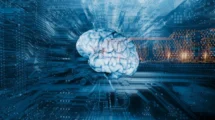A new revolutionary technology named Electron Microscopy has been perfected by researchers at a Swiss Federal Institute of Technology in Lausanne that can map the human brain in detail without changing the architecture of the brain.
Electron microscopy is the only imaging technique that can see the detailed structure of the nervous system, as well as synaptic connections. The technique fires a beam of electrons through a sample held in a vacuum and builds images at a higher magnification than light microscopes.
However, the electron beam damages the live cells and tissues. So, the brain tissue has to be fixed before it is observed under high magnification imaging method. It causes the brain to shrink leading to distorted images. The shrinking shows the neurons closer than they are.
The team consists of Graham Knott, Natalya Korogod, and Carl Petersen, who have employed the high-pressure “Cryofixation” to get over the problem of shrinkage. The process uses streams of liquid nitrogen that freezes the brain tissues down to minus 90 degrees Celsius in a matter of milliseconds. The brain, in this case, was a mouse cerebral cortex.
.
Normally, the brain is fixed using stabilizing agents like aldehydes and then embedded in a resin. It led to the shrinkage of the brain by 30%. Our understanding of the brain is distorted, and we cannot know exactly the proximity of the neurons to one another.
Using high pressure, the Rapid Freezing prevents the water crystals from being formed. The water in high pressure turns into a glass-like structure preserving the original structures and architecture of the tissue.
The last step is to embed the frozen tissue in resin. It is effected by removing the ‘glass like water’ and replacing it with acetone and finally fixing it with resin. Once the brain is cryofixed and then embedded it is observed with the help of a 3D electron microscope. The researchers compared the images with the images of the brain that were taken after it was chemically fixed. The chemically fixed brain was smaller in volume than the cryofixed brain




